W6PQL Solid State 1kW 6m Power Amplifier
My trusty 8877 6m amplifier 'died' in late December 2020. It was repaired but the blower noise and poor overall efficiency were a nuisance, so work has started building a solid state replacement.
This new 6m PA is being built from an early version of W6PQL's 6 Meter Kilowatt RF Deck Kit that I bought on a whim about 6 years ago, but never built. The LDMOS device in this amplifier will be the BLF188XR. The rest of the material and parts used are from my 'junk box'.
Dec 2020 ... W6PQL LDMOS kitset 6m PA (plus a 'Beehive' match box is for size comparison)
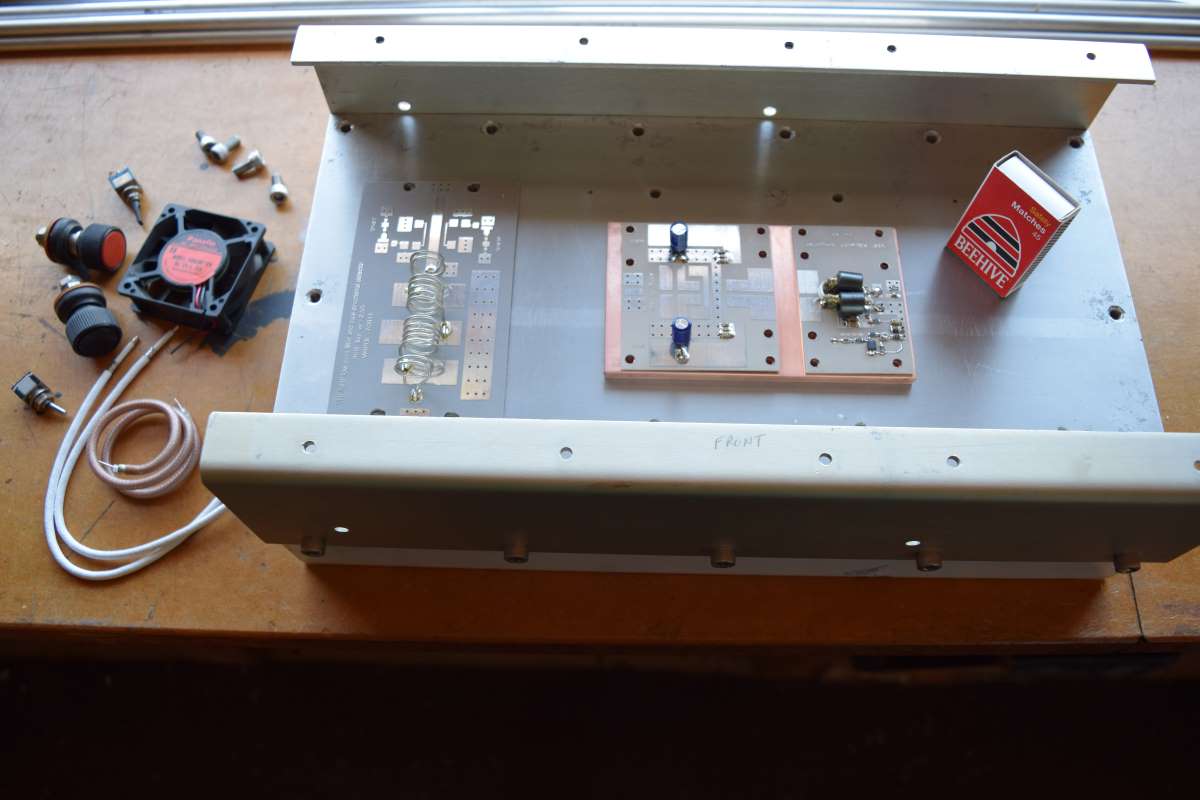
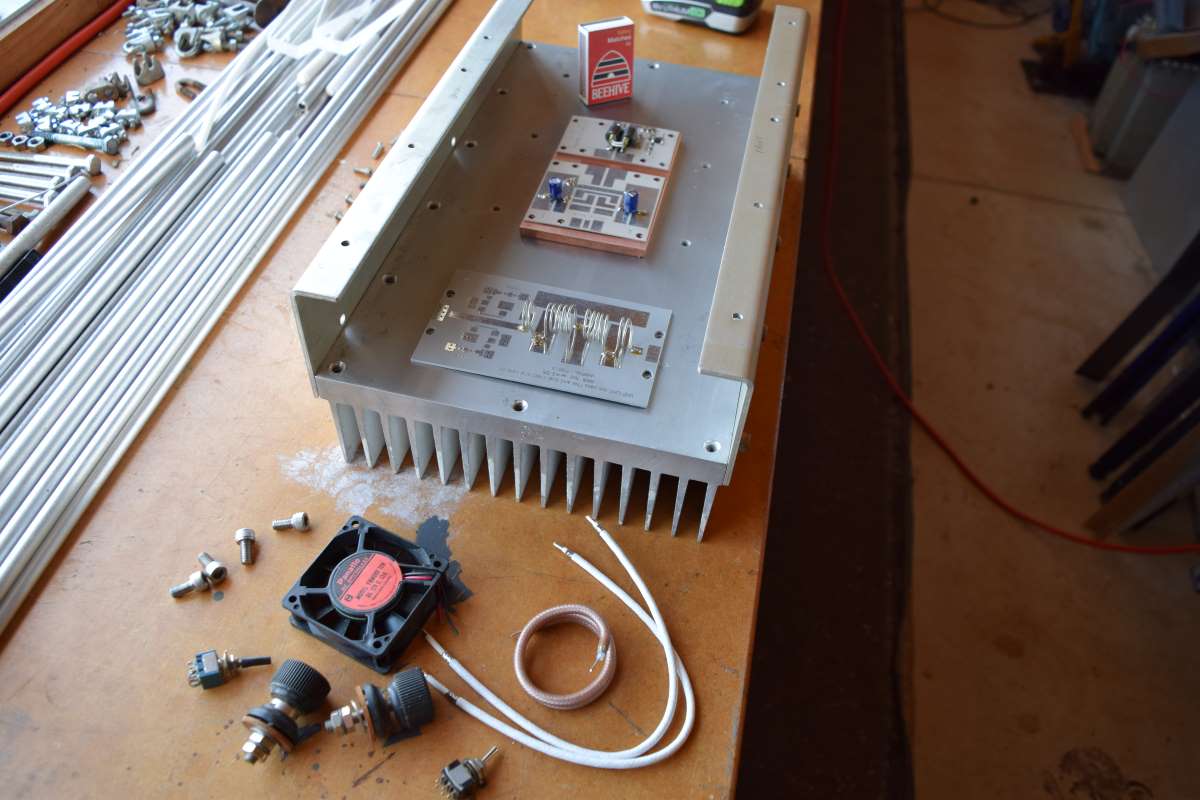
Jan 2021 ... the first test of the RF amplifier pallet and input attenuator - 50W of drive = 1100W output with a 48V supply.
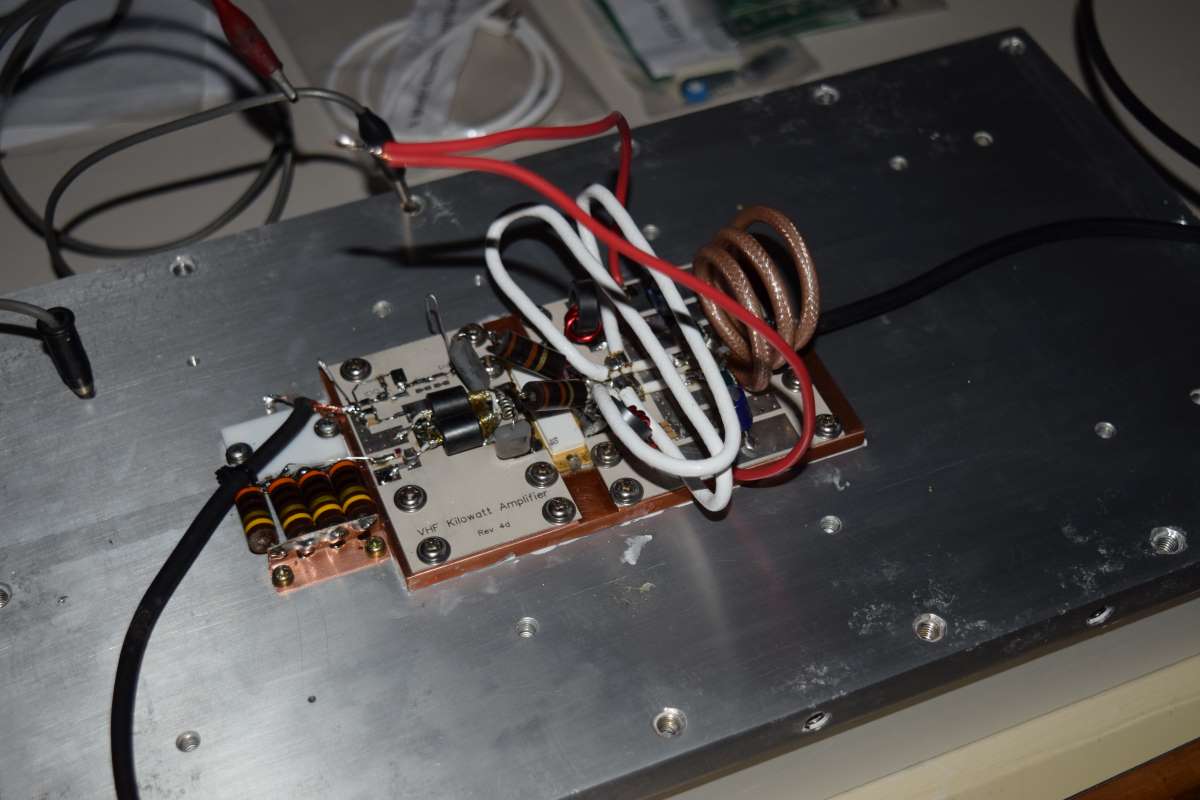
Jan 2021 ... I was going to use the W6PQL LPF kit, but it came with a warning that there must be airflow to prevent solder melting while passing 1kW of RF power, so I decided to build my own with more rugged components (and have airflow anyway!) A few minutes with 'Elsie' software provided a 7-pole capacitor-input Chebyshev LPF design with 42dB 2nd harmonic suppression and 70dB third harmonic suppression.
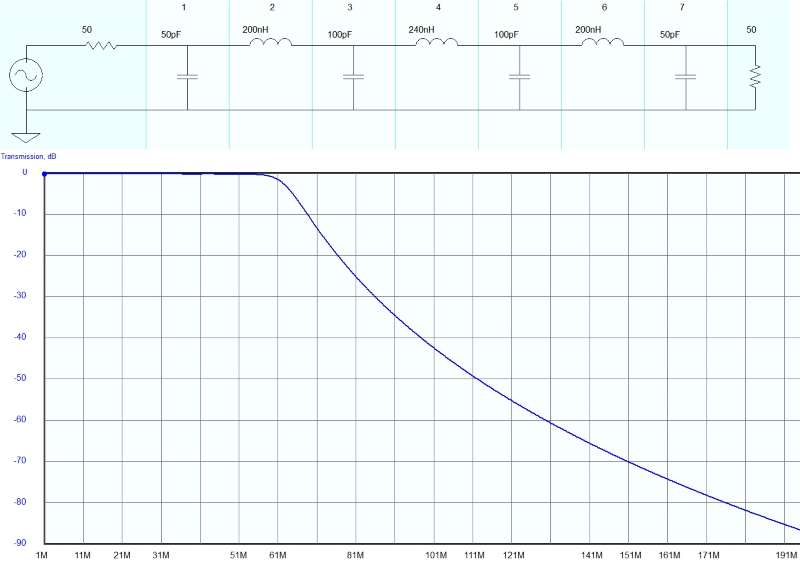
Note: the actual spurious emissions will be MUCH lower than this because they are already many dB down on the findamental power level. Typically, the second harmonic is 33dB down on the fundamental power (so, 75dB down after the LPF), and the third harmonic is 28dB down on the fundamental power (so, 98dB down after the LPF). In reality the actual figures will not be quite so good due to 'leakage' around the LPF.
The home made LPF uses 2mm diameter silver plated wire recovered from some 'Air Dux' coil stock, and '850' series 5kV ceramic capacitors mounted on a piece of copper sheet (a 'flashing' used at the timber joints on weather-board clad houses).
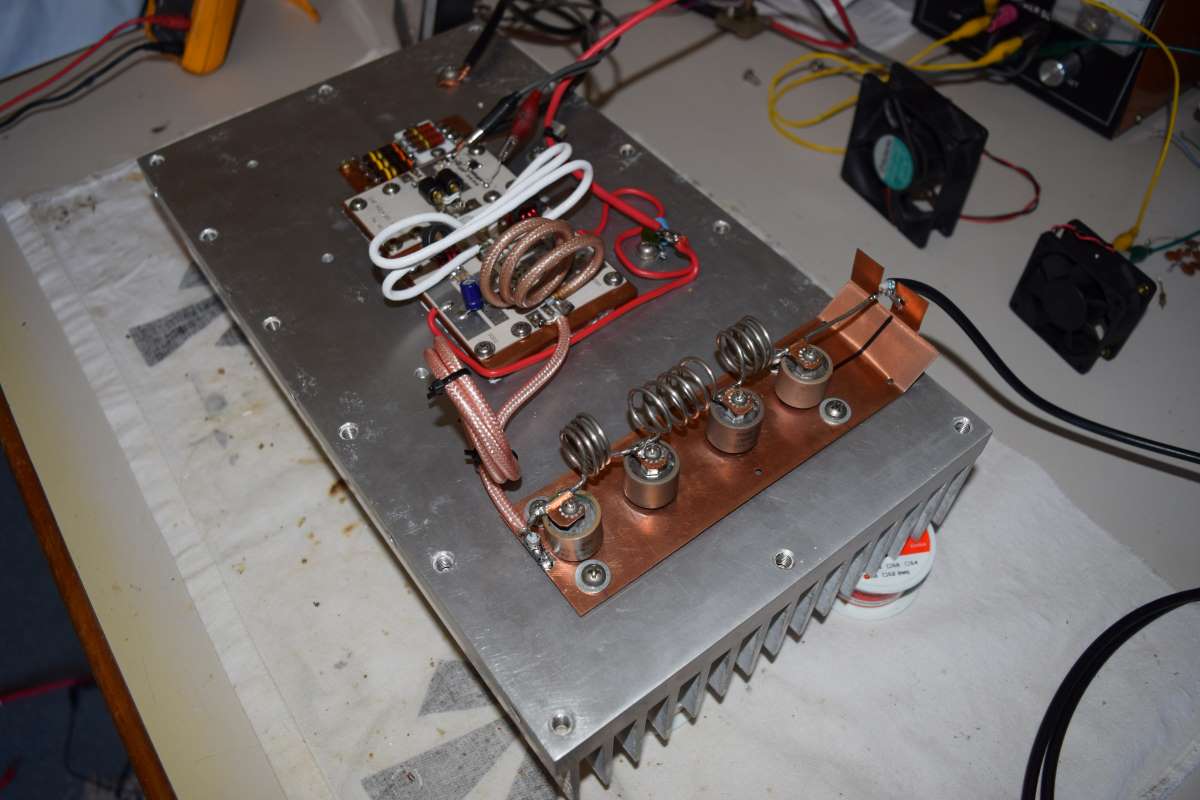
As mentioned in the W6PQL notes, the length of coax between the PA output and the LPF input had to be selected/adjusted for good efficiency. The incorrect length (particularly when it was 'too short') resulted in 50 - 55% amplifier efficiency, but the optimum length resulted in around 70% efficiency at full power. The coax length used with this particular LPF to achieve this was around 600mm and was not critical. After some squeezing and stretching of the coils, the filtered 6m RF output after the LPF is just over 1kW.
Dec 2021 : finally completed the PA. The input attenuator was altered so 35 to 40W of drive produces 1kW RF output with the 48V power supply.
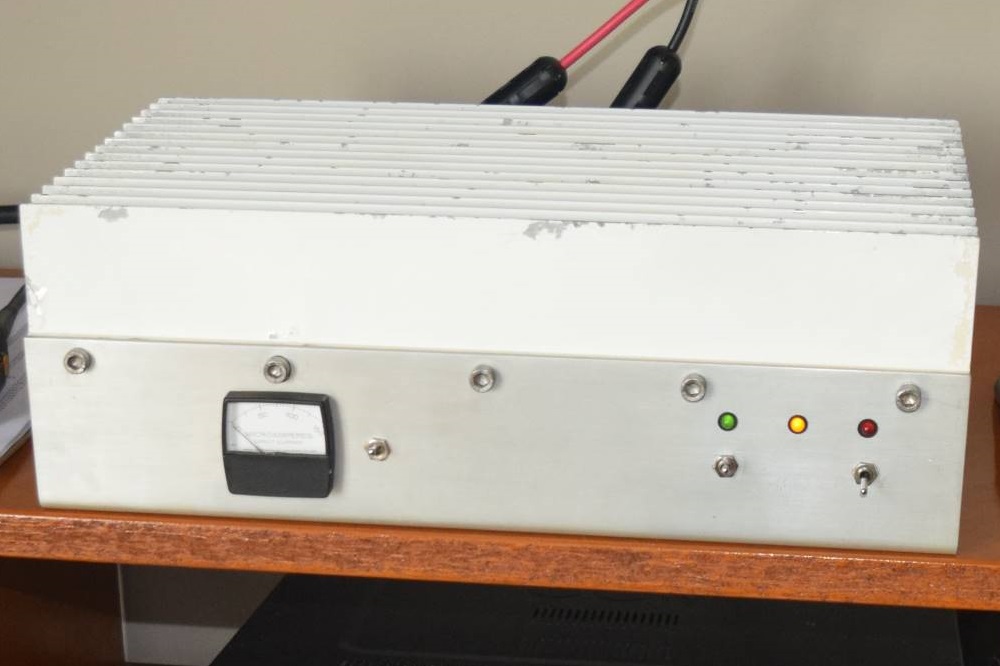
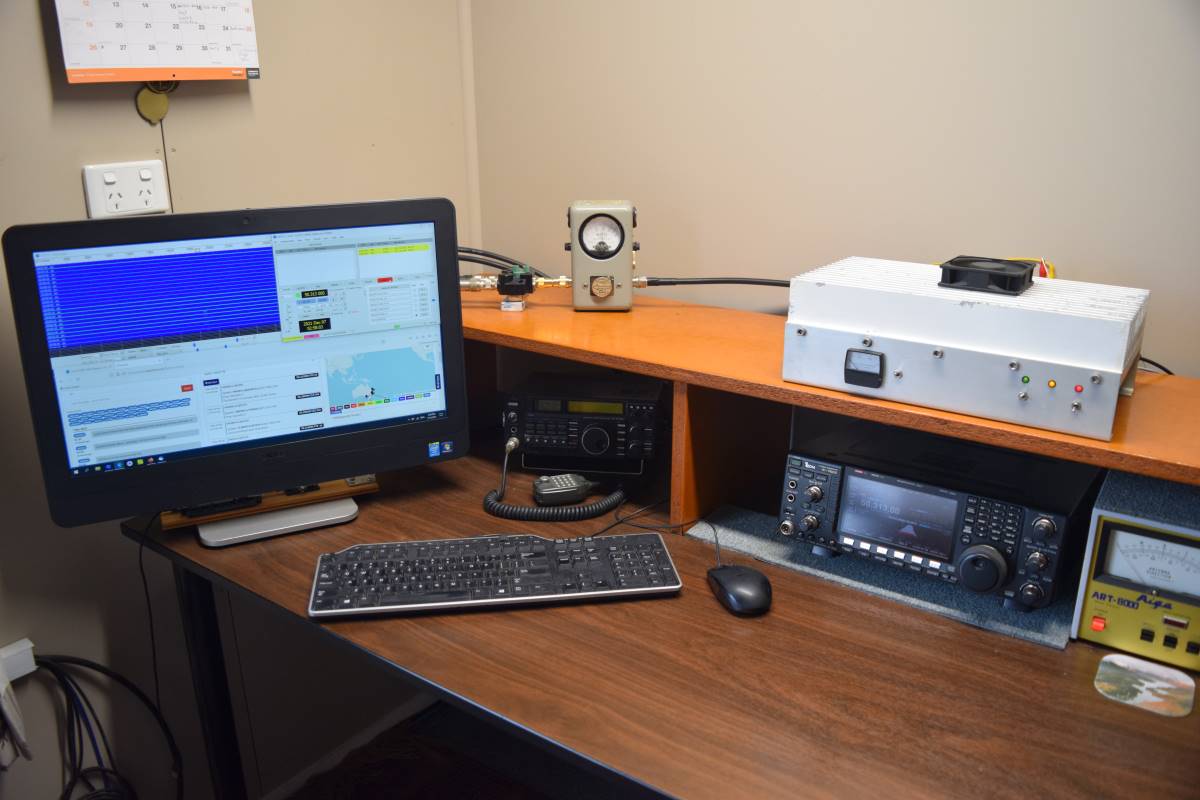
The amplifier is cooled with a small axial fan inside blowing over the amplifier pallet, and a 100mm square axial fan blowing onto the heatsink fins. The PA heatsink remains cool to the touch during sustained digi-mode operation.
The overall AC input efficiency has improved markedly due to the high efficiency of the 48V SMPSU as compared to the iron core filament and HT transformers in the old 8877 amplifier. The AC line input to the old 8877 PA was about 3500VA, the AC line input to the new LDMOS PA is now about 2000VA for the same RF power output.
Jan 2022 : As a precaution, RF negative feedback was added to reduce the PA gain and ensure stability. There was no apparent need for it (the ampifier has run very well for the past month), but I just felt better having it. In addition, the input attenuator was replaced with a 'smaller' one (about 3 or 4 dB loss) so the PA could be driven by an IC-705. Now 6 or 7 Watts of drive is required for 1kW of RF power output. A larger fan and a 'high/low' fan speed switch were added to keep the amplifier really cool during EME skeds, but quiet for 'normal' 6m operation.
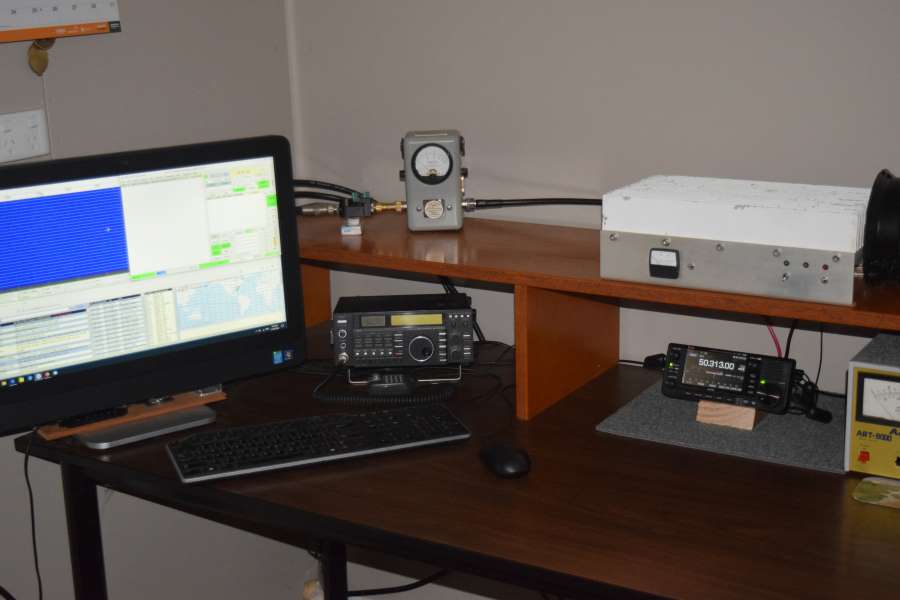
Aug 2022 : This PA is now driven by an IC-7610 transceiver and powered by a Huawai R4875G1 'server supply'.
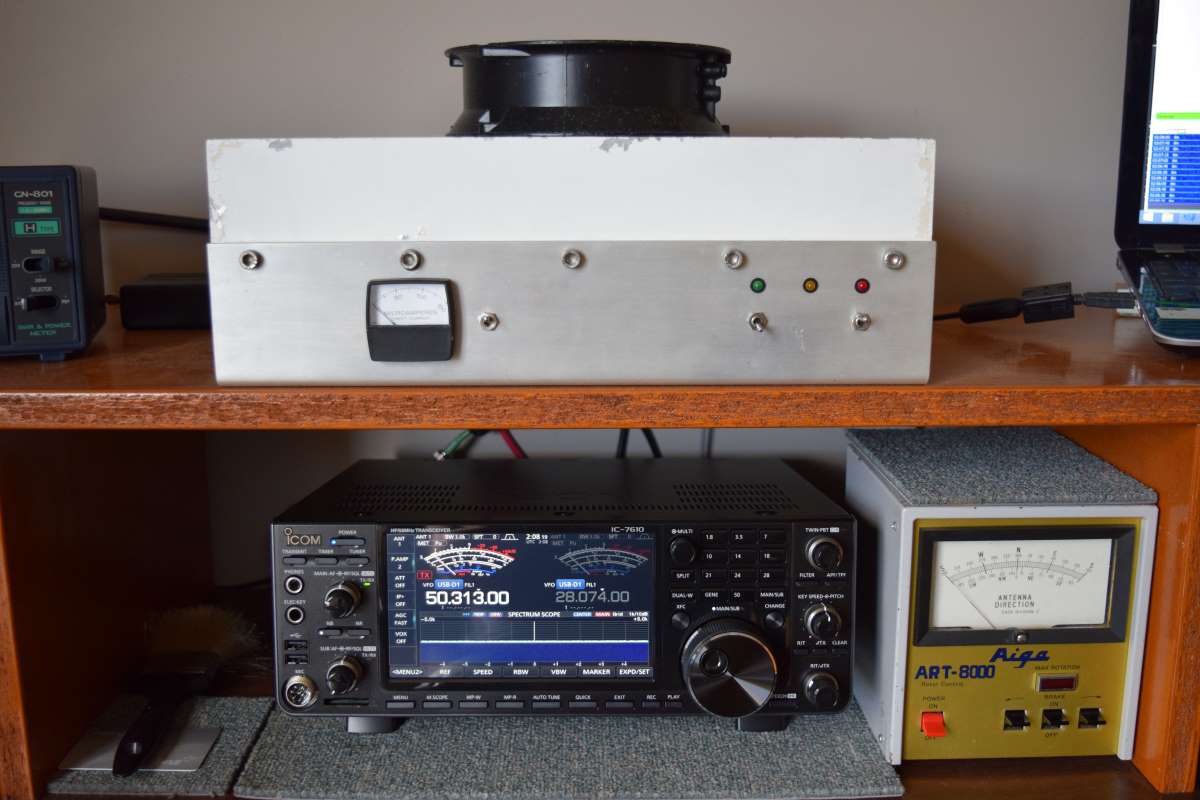
Oct 2023 : The BLF188XR (50V device) 'died' when a connector on the external Power/SWR meter burnt up. It was replaced by an MRFX1K80H (65V device). The amplifier is still running on the Huawai 'server supply' at 50V and is again producing 1kW output at that voltage. When the drive is increased the power output saturates at 1200 Watts (as per the spec sheet for the MRFX1K80 running at 50V).
|